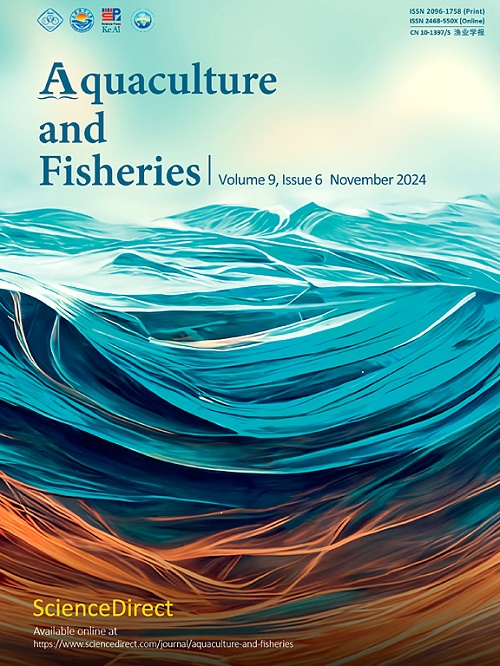Biological strategies in aquaculture disease management: Towards a sustainable blue revolution
Q1 Agricultural and Biological Sciences
引用次数: 0
Abstract
Although the aquaculture industry has undergone monumental development worldwide, the ever-present threats of infectious diseases have become a constraining factor, imperiling its sustainability. Antimicrobial resistance (AMR) remains a real menace to industrial aquaculture due to the careless adoption of preventive therapies (antimicrobial therapeutic drugs) to forestall disease outbreaks in aquatic food production. Suitable strategies, or at least supplementary measures, should therefore be developed to curb the emergence and widespread transmission of AMR. Vaccination represents one of the primary options to substantially mitigate the economic damages imposed by emerging infectious diseases on global aquaculture; nevertheless, the availability of commercial aquatic vaccines is usually limited, and many vaccines only confer minimal or poor protection against infections (during the early stages of animal development). Accordingly, a large body of research has been enthusiastically exploring alternate approaches for managing animal health challenges. These efforts have led to the establishment of various biocontrol strategies, such as the versatile use of high-value functional ingredients (e.g., probiotics, prebiotics, synbiotics, paraprobiotics, postbiotics, and phytogenics), phage therapy, and quorum-sensing interference (QSI), to promote the health and welfare of farmed aquatic species in a responsive or preventative manner. This review article addresses the state-of-the-art pertinent to biological control as an eco-friendly green approach for aquatic disease management, paving the route to a sustainable blue revolution. The potential biological mechanisms of these strategies are also described, along with the impediments to scientific progress and topics that merit further investigation.
水产养殖疾病管理的生物学策略:走向可持续的蓝色革命
尽管水产养殖业在世界范围内取得了巨大的发展,但始终存在的传染病威胁已成为一个制约因素,危及其可持续性。抗菌素耐药性(AMR)仍然是工业化水产养殖的一个真正威胁,原因是不小心采用预防性疗法(抗菌素治疗药物)来预防水产食品生产中的疾病暴发。因此,应该制定适当的战略,或至少是补充措施,以遏制耐药性的出现和广泛传播。疫苗接种是大幅度减轻新发传染病对全球水产养殖业造成的经济损失的主要选择之一;然而,商业水生疫苗的供应通常是有限的,许多疫苗只能提供最低限度的或很差的预防感染的保护(在动物发育的早期阶段)。因此,大量的研究一直在热情地探索管理动物健康挑战的替代方法。这些努力导致了各种生物防治策略的建立,如高价值功能成分(如益生菌、益生元、合成菌、副益生菌、后益生菌和植物源)、噬菌体治疗和群体感应干扰(QSI)的广泛使用,以响应性或预防性的方式促进养殖水生物种的健康和福利。这篇综述文章介绍了最新的生物防治作为一种生态友好的绿色水生疾病管理方法,为可持续的蓝色革命铺平了道路。本文还描述了这些策略的潜在生物学机制,以及科学进步的障碍和值得进一步研究的主题。
本文章由计算机程序翻译,如有差异,请以英文原文为准。
求助全文
约1分钟内获得全文
求助全文
来源期刊

Aquaculture and Fisheries
Agricultural and Biological Sciences-Aquatic Science
CiteScore
7.50
自引率
0.00%
发文量
54
审稿时长
48 days
期刊介绍:
 求助内容:
求助内容: 应助结果提醒方式:
应助结果提醒方式:


